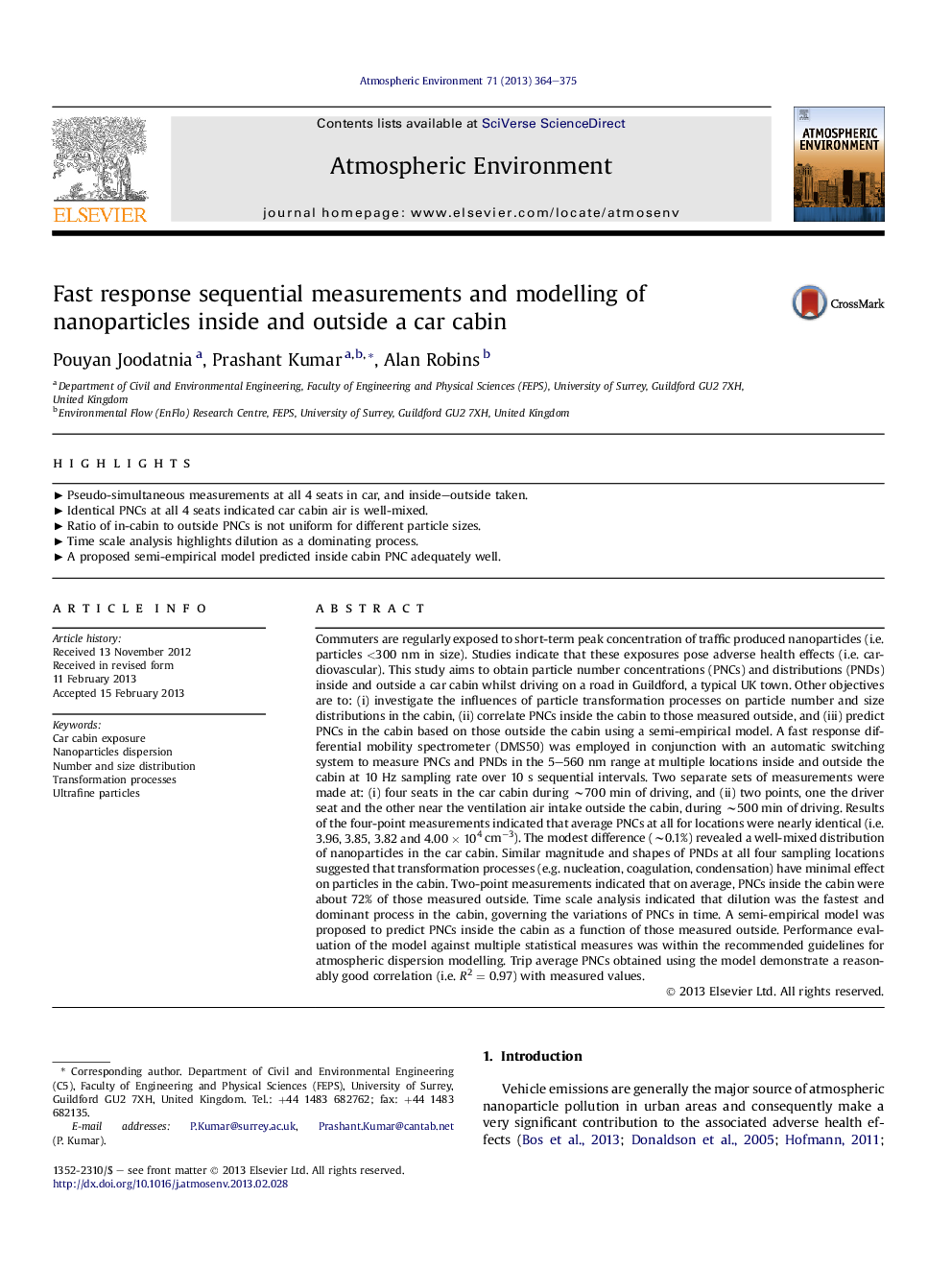| کد مقاله | کد نشریه | سال انتشار | مقاله انگلیسی | نسخه تمام متن |
|---|---|---|---|---|
| 4438309 | 1620400 | 2013 | 12 صفحه PDF | دانلود رایگان |

Commuters are regularly exposed to short-term peak concentration of traffic produced nanoparticles (i.e. particles <300 nm in size). Studies indicate that these exposures pose adverse health effects (i.e. cardiovascular). This study aims to obtain particle number concentrations (PNCs) and distributions (PNDs) inside and outside a car cabin whilst driving on a road in Guildford, a typical UK town. Other objectives are to: (i) investigate the influences of particle transformation processes on particle number and size distributions in the cabin, (ii) correlate PNCs inside the cabin to those measured outside, and (iii) predict PNCs in the cabin based on those outside the cabin using a semi-empirical model. A fast response differential mobility spectrometer (DMS50) was employed in conjunction with an automatic switching system to measure PNCs and PNDs in the 5–560 nm range at multiple locations inside and outside the cabin at 10 Hz sampling rate over 10 s sequential intervals. Two separate sets of measurements were made at: (i) four seats in the car cabin during ∼700 min of driving, and (ii) two points, one the driver seat and the other near the ventilation air intake outside the cabin, during ∼500 min of driving. Results of the four-point measurements indicated that average PNCs at all for locations were nearly identical (i.e. 3.96, 3.85, 3.82 and 4.00 × 104 cm−3). The modest difference (∼0.1%) revealed a well-mixed distribution of nanoparticles in the car cabin. Similar magnitude and shapes of PNDs at all four sampling locations suggested that transformation processes (e.g. nucleation, coagulation, condensation) have minimal effect on particles in the cabin. Two-point measurements indicated that on average, PNCs inside the cabin were about 72% of those measured outside. Time scale analysis indicated that dilution was the fastest and dominant process in the cabin, governing the variations of PNCs in time. A semi-empirical model was proposed to predict PNCs inside the cabin as a function of those measured outside. Performance evaluation of the model against multiple statistical measures was within the recommended guidelines for atmospheric dispersion modelling. Trip average PNCs obtained using the model demonstrate a reasonably good correlation (i.e. R2 = 0.97) with measured values.
► Pseudo-simultaneous measurements at all 4 seats in car, and inside–outside taken.
► Identical PNCs at all 4 seats indicated car cabin air is well-mixed.
► Ratio of in-cabin to outside PNCs is not uniform for different particle sizes.
► Time scale analysis highlights dilution as a dominating process.
► A proposed semi-empirical model predicted inside cabin PNC adequately well.
Journal: Atmospheric Environment - Volume 71, June 2013, Pages 364–375